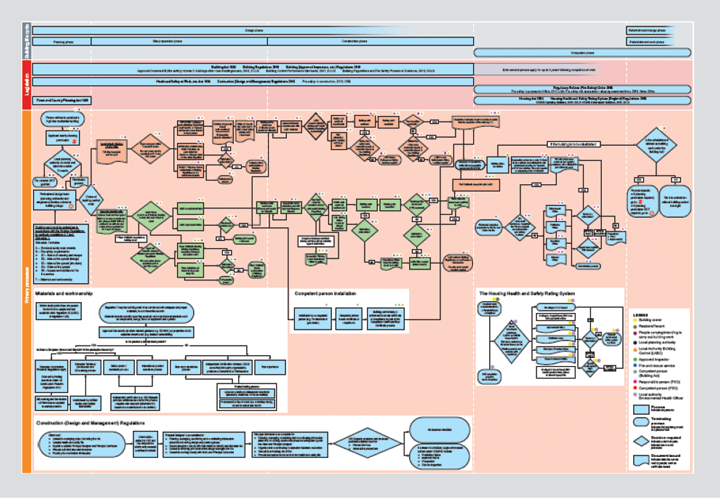Step Up and Share
As lessons emerge following the Grenfell Tower review, chemical engineers have a duty to share their process safety knowledge across other sectors
NONE of us will ever forget waking up on 14 June last year to the horrific images which were emerging of the tragic fire which had occurred overnight in Grenfell Tower. In the days that followed I kept thinking and saying: “I don’t understand, how can this have happened? How had the building regulation system failed to prevent the building of something which could burn like that?” I had no idea that less than six weeks later I was going to be asked to find some answers to that very question.
The UK’s secretary of state for communities and local government asked me to conduct an independent review of building regulations and fire safety, focussing on high rise buildings, when it became clear that there were more than 300 other high rise residential buildings in England with similar cladding systems to those used in the Grenfell Tower refurbishment. My brief was to conduct the review at pace, with an interim report before the end of 2017 and a final report by Spring 2018, and to make recommendations for how the regulatory system needs to be changed.
Review
The review team began work in August. We put out a call for evidence and received a massive response. It very quickly became clear that many of the people who were part of the system already knew that it wasn’t working – those in industry, regulators and of course, residents of other high rise buildings. By the time I published my interim report in December last year we had produced a full map of the regulatory system (outlined in Figure 1) – which showed an unbelievable level of complexity and highlighted the many opportunities for people to take shortcuts or to game the system. The system was not fit for purpose. A radical overhaul was needed – guidance was complex and impenetrable for the user; roles and responsibilities were unclear; there was no differentiation in competency requirements between those who worked on simple buildings and those who worked on high rise complex buildings; compliance was weak and enforcement and sanctions virtually non-existent; and the system of product testing failed to provide meaningful quality assurance.
In January we formed working groups to develop proposals in the six areas we had identified in the interim report and we also committed to look into examples of good international practice which we may be able to learn from and to look closely at how the procurement process impacted upon behaviours in the system. Throughout the review process we had an extraordinary level of positive input from everyone we approached – people in construction industry, tenant groups, housing associations, the insurance industry, regulators and many more. Everyone wanted to see real and lasting change. It also became apparent that this was not just a problem for England to address. The Scottish government commissioned its own review of building regulations and the Building Products Association Innovation Council of Australia published an “Action Plan for Building Regulatory Reform” which was uncannily closely aligned to where we were headed in our review.
The final report, published on 17 May, proposes a new regulatory framework to drive real culture change and different behaviours throughout the system. I don’t intend to go through the detail of the report here but I do want to highlight some of the lessons that I learned in doing this review and some of the thinking behind the approach that is now planned.

Recent Editions
Catch up on the latest news, views and jobs from The Chemical Engineer. Below are the four latest issues. View a wider selection of the archive from within the Magazine section of this site.




